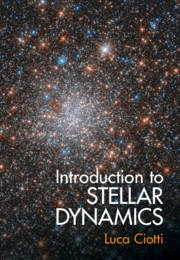Refine listing
Actions for selected content:
16950 results
5 - Stellar Radius from Luminosity and Temperature
- from Part I - Stellar Properties
-
- Book:
- Fundamentals of Astrophysics
- Published online:
- 08 October 2021
- Print publication:
- 03 June 2021, pp 32-34
-
- Chapter
- Export citation
12 - Light Intensity and Absorption
- from Part I - Stellar Properties
-
- Book:
- Fundamentals of Astrophysics
- Published online:
- 08 October 2021
- Print publication:
- 03 June 2021, pp 74-81
-
- Chapter
- Export citation
Part III - Interstellar Medium and Formation of Stars and Planets
-
- Book:
- Fundamentals of Astrophysics
- Published online:
- 08 October 2021
- Print publication:
- 03 June 2021, pp 149-190
-
- Chapter
- Export citation
21 - The Interstellar Medium
- from Part III - Interstellar Medium and Formation of Stars and Planets
-
- Book:
- Fundamentals of Astrophysics
- Published online:
- 08 October 2021
- Print publication:
- 03 June 2021, pp 151-161
-
- Chapter
- Export citation
4 - Surface Temperature from a Star’s Color
- from Part I - Stellar Properties
-
- Book:
- Fundamentals of Astrophysics
- Published online:
- 08 October 2021
- Print publication:
- 03 June 2021, pp 25-31
-
- Chapter
- Export citation
Index
-
- Book:
- Fundamentals of Astrophysics
- Published online:
- 08 October 2021
- Print publication:
- 03 June 2021, pp 285-290
-
- Chapter
- Export citation
32 - The Hot Big Bang
- from Part V - Cosmology
-
- Book:
- Fundamentals of Astrophysics
- Published online:
- 08 October 2021
- Print publication:
- 03 June 2021, pp 251-256
-
- Chapter
- Export citation
18 - Hydrogen Fusion and the Mass Range of Stars
- from Part II - Stellar Structure and Evolution
-
- Book:
- Fundamentals of Astrophysics
- Published online:
- 08 October 2021
- Print publication:
- 03 June 2021, pp 119-125
-
- Chapter
- Export citation
33 - Eras in the Evolution of the Universe
- from Part V - Cosmology
-
- Book:
- Fundamentals of Astrophysics
- Published online:
- 08 October 2021
- Print publication:
- 03 June 2021, pp 257-268
-
- Chapter
- Export citation
Appendix C - Atomic Origins of Opacity
-
- Book:
- Fundamentals of Astrophysics
- Published online:
- 08 October 2021
- Print publication:
- 03 June 2021, pp 277-280
-
- Chapter
- Export citation
Part I - Stellar Properties
-
- Book:
- Fundamentals of Astrophysics
- Published online:
- 08 October 2021
- Print publication:
- 03 June 2021, pp 1-98
-
- Chapter
- Export citation
13 - Observational Methods
- from Part I - Stellar Properties
-
- Book:
- Fundamentals of Astrophysics
- Published online:
- 08 October 2021
- Print publication:
- 03 June 2021, pp 82-88
-
- Chapter
- Export citation
17 - Structure of Radiative versus Convective Stellar Envelopes
- from Part II - Stellar Structure and Evolution
-
- Book:
- Fundamentals of Astrophysics
- Published online:
- 08 October 2021
- Print publication:
- 03 June 2021, pp 112-118
-
- Chapter
- Export citation
Appendix B - Equilibrium Excitation and Ionization Balance
-
- Book:
- Fundamentals of Astrophysics
- Published online:
- 08 October 2021
- Print publication:
- 03 June 2021, pp 274-276
-
- Chapter
- Export citation

Introduction to Stellar Dynamics
-
- Published online:
- 28 May 2021
- Print publication:
- 10 June 2021
3 - Infrared (and Optical) Photodetectors
-
- Book:
- Detection of Light
- Published online:
- 30 April 2021
- Print publication:
- 13 May 2021, pp 58-98
-
- Chapter
- Export citation
2 - Photodetector Basics
-
- Book:
- Detection of Light
- Published online:
- 30 April 2021
- Print publication:
- 13 May 2021, pp 24-57
-
- Chapter
- Export citation
9 - Visible and Infrared Coherent Receivers
-
- Book:
- Detection of Light
- Published online:
- 30 April 2021
- Print publication:
- 13 May 2021, pp 279-302
-
- Chapter
- Export citation
10 - Submillimeter- and Millimeter-Wave Heterodyne Receivers
-
- Book:
- Detection of Light
- Published online:
- 30 April 2021
- Print publication:
- 13 May 2021, pp 303-345
-
- Chapter
- Export citation
1 - Introduction
-
- Book:
- Detection of Light
- Published online:
- 30 April 2021
- Print publication:
- 13 May 2021, pp 1-23
-
- Chapter
-
- You have access
- Export citation
